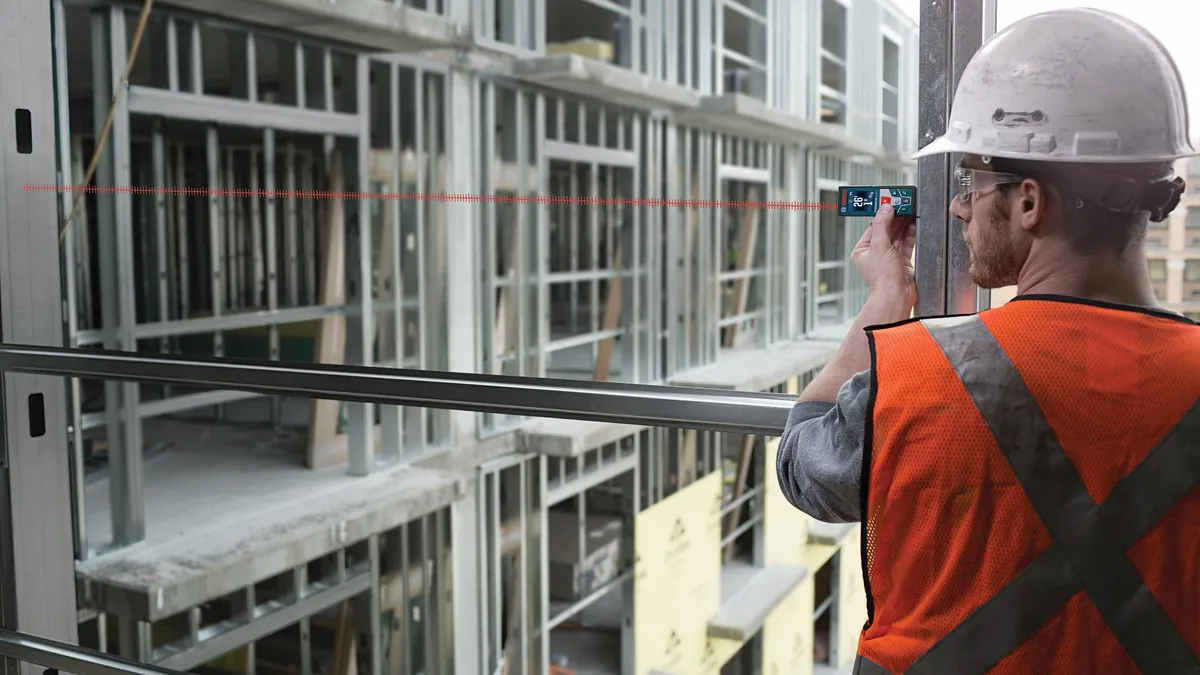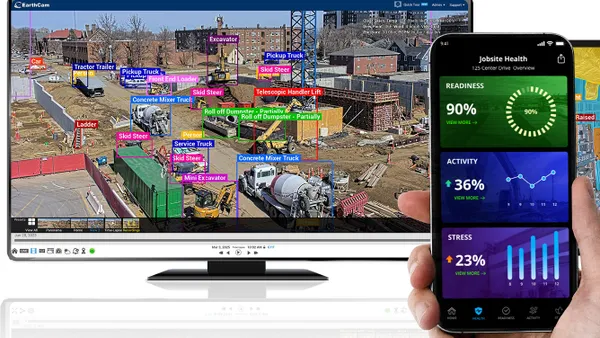When industry professionals reference construction technology, the first topics that might come up are likely drones, building information modeling (BIM), 3-D laser scanning technology, virtual reality, 3-D printing and advancements in high-performance versions of long-time material staples like concrete. However, how often do construction experts associate progress in technology to the worker in the field?
Typically, these developments benefit the gatekeepers of budgets and overall project performance, but there are plenty of innovations out there making the tasks of foremen, tradesmen and other site workers easier so they can be as productive as possible.
Tools reducing body strain
The physical wear and tear on a construction worker takes a toll when considering a life-long career in the industry. According to an OSHA report, the copious strain and sprains can cause musculoskeletal disorders of the extremities, hips, neck and back that can sideline mobility long after a worker's construction days are behind them.
But not only obvious injuries affect those in the field. Sometimes a construction worker can be hurt most by the every day handling of tools and the execution of standard duties. This can lead to Carpal Tunnel Syndrome (repeated bending at wrist or pressing wrist against hard object, holding tolls tightly), Raynaud's Syndrome (vibrating hand tools, cold weather work), Tendinitis (repetitive motion work, rotating movements), Thoracic Outlet Syndrome (prolonged overhead work, carrying heavy items), Carpet Layers' Knee and degenerative disc disease.
Fortunately for today's construction workers, advancements in materials and design are producing lighter, less stressful tools and equipment. After all, the less of a beating a worker's body takes during the workday, the more effective and productive they will be.
Bosch Power Tools is one tool and equipment manufacturer that has focused on reducing body strain. Its RH328VC-36 Rotary Hammer won a World of Concrete Innovation award for a design that reduces vibration during concrete chiseling and drilling, thereby lessening human wear and tear. Bosch spokesperson Andy Ambrosius said that Bosch utilizes injury preventing mechanisms in its tool design and makes safety and productivity a priority.
Robotic total stations
Another high-tech field productivity solutions are robotic total stations (RTS). Software called Trimble Field Link can control the RTS and uses the CAD files and 3-D models, on which points have been located, to indicate layout areas in the field for items like floor and wall penetrations. That information, according to David Burczyk of Trimble Buildings, can be loaded onto a tablet and then provide directions directly to the field worker. If crews want to get more advanced, the system can be designed to have a laser actually "point" the crew's way to the correct layout.
"It's a simple interface," Burczyk said, "and allows the guys out in the field to just take that information …load it on the tablet, set up the RTS and they just start creating a work list of the points that they need to locate."
A two-day training session is all it takes to get crews up and running — which isn't long for guys who used to do it all with a tape measure, Burczyk noted. "We took all that technical stuff, and we put it in the background to where the software will automatically do all those calculations for you. The person who is using this is not a trained surveyor, they are a craft worker," he said.
Project organization software
But just because someone is not in the office doesn't mean that they can't take advantage of higher-tech tools as well. Less than 5% of construction field workers use software in their day to day work, but Edward Farraye of Fieldwire said the company's products are developed specifically with that group of worker in mind. Most Fieldwire users, he said, start with basic field management — organizing plans and requesting information from their phone.
Users have reported a time savings of up to 10 hours per week and chalk that up to having one platform that everyone can use to collaborate. Familiarity with smart phones and iPads has made field worker adoption significantly easier for FieldWire users, as well as other construction applications. "(We) definitely try to create the product for the field worker, so we try to keep it as simple as possible," Farraye said.
Another major player in field organization is PlanGrid, a blueprint and associated documentation organizing application. Company CMO Jamie Grenney said that in the past, it was difficult to get technology into the field, largely due to the size and functionality of devices. "No construction worker was going to take a laptop with a short battery life and no Wi-Fi connectivity on the job," he said. In the last few years, however, Grenney said the proliferation of mobile devices has made the task of introducing the latest applications to those workers a little easier.
PlanGrid also had ease of end-user adoption in mind when designing its user interface, he said. "Rather than a file structure everything is a sheet-based approach," Grenney said. "It's a grid view — you see all your plans laid out. That's intuitive. Anybody can open that up, and it's a paradigm that's familiar to them."
The speed at which users can view and flip through the material, he said, is important to maintaining user satisfaction with the system, so PDF technology is out, although users can print out plans or associated project documentation if necessary. Perhaps the biggest advantage, Grenney said, is that PlanGrid ensures that everyone is working off the same set of blueprints at the same time. Marking them up as they go makes it all the more easier to hand over a complete set of as-builts at the end of the project and prevents the timewasting task of trying to update a set of plans quickly with revisions.
Wearable technology
According to ClickSoftware Vice President of Strategic Industries Steve Smith, wearable technology could also be the next big thing on the project site. Google Glasses, Apple Watches, Fitbit wristbands and other wearables could be customized to track workers in order to place them in the optimal positions throughout the job site and to optimize workforce productivity.
Last year, Anthony Mullen of London-based data science consultancy Profusion wrote in Construction Dive that "smart clothing should be of particular interest to the construction industry when considering the curious fact that construction safety apparel has remained relatively unchanged for the past 50 years."
While the "big brother" aspect could present some initial resistance, it's a viable tool whose day might have finally arrived, particularly due to the fact that today's wearables are becoming less intrusive, Smith noted.












